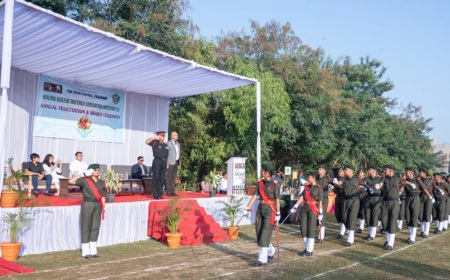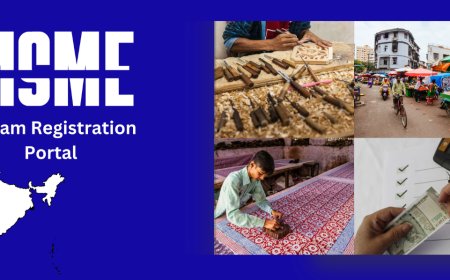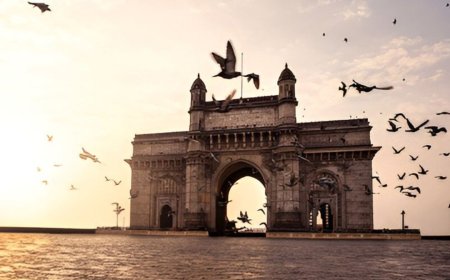Sustainable Tourism In India
Sustainable Tourism in India encourages eco-friendly travel that conserves nature, supports local communities, and promotes cultural heritage while reducing negative environmental impact across tourist destinations.

Sustainable tourism in India is gaining traction, with initiatives focused on minimizing negative environmental and social impacts while maximizing economic benefits for local communities. This progressive shift toward eco-conscious travel is not just a trend but a necessary response to the environmental challenges and cultural sensitivities faced by popular tourist destinations across the country. With a rich cultural heritage, diverse landscapes, and an ever-growing tourism industry, India is now making conscious efforts to protect its natural and social assets through sustainable tourism.
Why Sustainable Tourism Matters
Sustainable tourism is a form of tourism that aims to reduce the ecological footprint while ensuring social inclusivity and long-term economic benefits. It seeks to balance environmental conservation with cultural preservation and local community empowerment. In a country like Indiawith its fragile ecosystems, sacred sites, and dense populationsustainable tourism is not just important, it's vital.
National Strategy and Policies
To align tourism development with sustainability goals, India has introduced a National Strategy for Sustainable Tourism. This comprehensive framework aims to mainstream sustainability in the tourism sector, ensuring it remains resilient, inclusive, and resource-efficient. The strategy focuses on encouraging low-impact tourism that conserves biodiversity, supports local communities, and safeguards cultural heritage.
The Ministry of Tourism is also integrating the Global Sustainable Tourism Council (GSTC) standards into its regulatory framework. These global benchmarks help identify and reward operators who practice responsible tourism, further enhancing credibility and transparency within the sector.
Ecotourism and Community-Based Tourism
At the heart of sustainable tourism in India lie ecotourism and community-based tourism. Ecotourism encourages visitors to explore natural habitats with minimal disturbance, while community-based tourism involves local populations in the tourism value chainensuring benefits are equitably distributed.
Destinations like Sikkim, Kerala, Spiti Valley, and parts of Northeast India have pioneered ecotourism by involving communities in trekking, homestays, and cultural activities. These models not only enhance visitor experiences but also promote the conservation of fragile ecosystems and traditional ways of life.
Government Initiatives and Infrastructure Development
The Indian government is actively promoting sustainable tourism through policies, infrastructure development, and funding schemes. One such initiative is Swadesh Darshan 2.0, a revamped version of the original scheme, which now places greater emphasis on sustainability and regional development.
This initiative focuses on:
-
Developing eco-friendly circuits
-
Supporting green infrastructure (solar lighting, waste recycling units)
-
Capacity building for local stakeholders
-
Encouraging tourism in lesser-known, eco-sensitive areas
By doing so, the government ensures that tourism growth does not come at the cost of environmental degradation or social inequality.
Certification and Standards
Certification plays a crucial role in ensuring accountability. India is gradually adopting the GSTC-recognized sustainability standards, enabling tour operators, hotels, and destination managers to align with global best practices. These certifications cover various aspects such as:
-
Environmental management
-
Social responsibility
-
Community involvement
-
Cultural preservation
This not only helps in standardizing sustainable practices but also guides travelers in making informed choices.
Community Involvement and Cultural Preservation
A defining feature of sustainable tourism in India is its community-first approach. Local communities are increasingly being trained, employed, and empowered as custodians of their own heritage and environment. This ensures:
-
Job creation in rural and remote areas
-
Preservation of local traditions such as crafts, folklore, and cuisine
-
Ownership and pride among residents in protecting their homeland
Homestays in Himachal Pradesh and tribal cultural tours in Odisha are excellent examples of community-driven tourism models that combine authentic experiences with social impact.
Environmental Protection and Responsible Travel
Sustainable tourism also places strong emphasis on environmental protection. Tourists and operators are encouraged to adopt eco-friendly behaviors such as:
-
Avoiding single-use plastics
-
Using renewable energy
-
Participating in clean-up drives
-
Supporting conservation efforts
For instance, eco-lodges in Jim Corbett and Kaziranga national parks offer wildlife safaris that follow ethical guidelines, ensuring minimal disruption to the natural habitat.
Economic Sustainability and Local Growth
One of the key objectives of sustainable tourism in India is to ensure that the economic benefits of tourism are locally rooted. Instead of money flowing out to large corporations, efforts are being made to:
-
Promote local artisans and businesses
-
Support farm-to-table food supply chains
-
Provide entrepreneurship opportunities in rural tourism
This economic decentralization not only uplifts local communities but also creates a robust support system for the tourism industry as a whole.
Growing Market and Changing Traveler Preferences
With increasing global awareness around sustainability, traveler preferences are shifting. Tourists, especially millennials and Gen Z, are seeking destinations that offer authentic, low-impact, and culturally rich experiences. Indias vast and varied landscape is ideal for such explorations, and with the right infrastructure and awareness, the country is poised to become a top sustainable tourism destination.
Examples of Sustainable Tourism Practices in India
-
Eco-lodges and Resorts
Properties like Banasura Hill Resort in Kerala and Dwarikas in Rishikesh focus on using local materials, renewable energy, and waste management systems. -
Community-led Tours
Villages in Sikkim and Nagaland offer guided cultural experiences, allowing tourists to live, cook, and learn with local families. -
Responsible Wildlife Tourism
Sanctuaries like Ranthambore, Bandhavgarh, and Gir are promoting ethical wildlife practices, discouraging overcrowding and commercial exploitation. -
Plastic-Free Campaigns
Popular destinations like Leh-Ladakh and Goa are pushing for plastic-free zones and encouraging travelers to carry reusable items.
Challenges and Opportunities
While sustainable tourism in India shows great promise, it also faces several challenges:
Awareness and Accessibility
Many travelers are unaware of sustainable options or struggle to access them due to lack of visibility and proper promotion.
Infrastructure Gaps
From green transportation to solid waste management, theres a need for more widespread eco-infrastructure, especially in tier-2 and tier-3 tourist destinations.
Coordination
Effective sustainable tourism requires collaboration among government bodies, private stakeholders, and local communities. This coordination is still evolving and needs consistent support.
However, these challenges also present opportunities for innovation, investment, and policy refinement.
Conclusion
Sustainable tourism in India is more than just a responsible way to travelits a vision for a better future. With clear strategies, government support, and increasing public awareness, India is taking confident strides towards eco-conscious tourism. By embracing community-based models, protecting the environment, and ensuring economic inclusivity, India can not only preserve its diverse heritage but also redefine global standards for sustainable tourism.
As the world seeks greener alternatives in every sector, Indias tourism industry has the potential to lead by examplewhere every journey creates joy, empowers communities, and protects the planet.



































